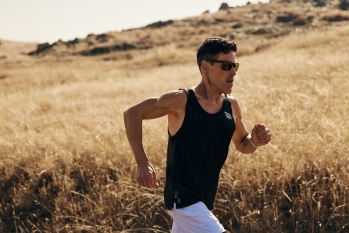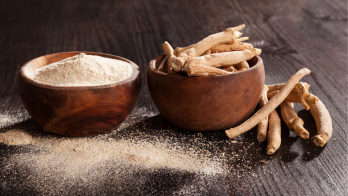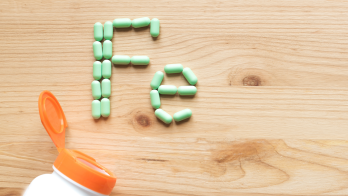The most effective strategies for cyclist recovery, according to science
Are you doing enough to help your body recover after a tough ride? Here are the most effective strategies for cyclist recovery that will help your body recuperate between rides and maximize your performance gains.
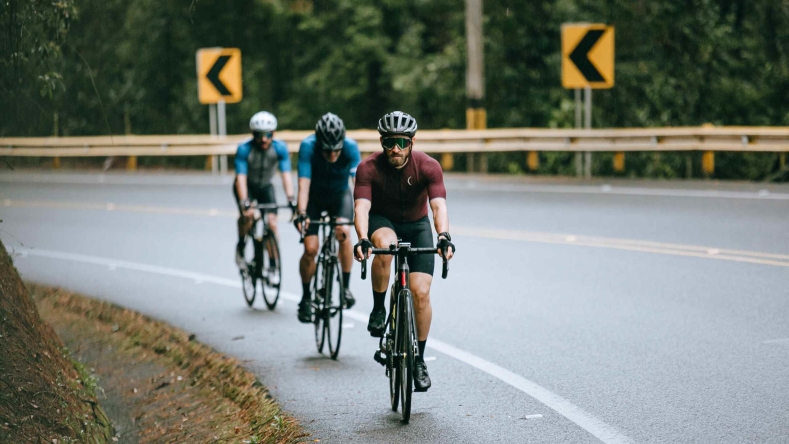
A solid recovery routine is essential for helping your body get the most out of every cycling session, as research continues to find that what you do after a ride can make or break your gains.
In this guide, we’ll dive deeper into the best science-backed ways to recover after a tough ride —from why it’s so important to the most effective ways you can help your body recoup.
First, let’s look at what happens when you push yourself on a ride that makes cycling recovery so important.
Why is cyclist recovery important?
Proper recovery is the cornerstone of cycling performance, as research has found that recovery is essential for both your physical and mental health.
The physical demands of a tough ride deplete your muscles’ glycogen (energy) stores, and you lose fluid and electrolytes through sweat [ 1 2 3 4 1 5
Cycling can also be mentally challenging, particularly if you’re trying to hit specific performance goals or overcome an injury. A good recovery routine can help you stick with a new exercise program, reduce training-related fatigue, improve mental toughness, cope with the pressures of competition, and even overcome injuries — all of which may correlate with better cycling performance and recovery [ 6 7
Skimping on recovery can put you at greater risk for
overtraining
, injury, and illness.
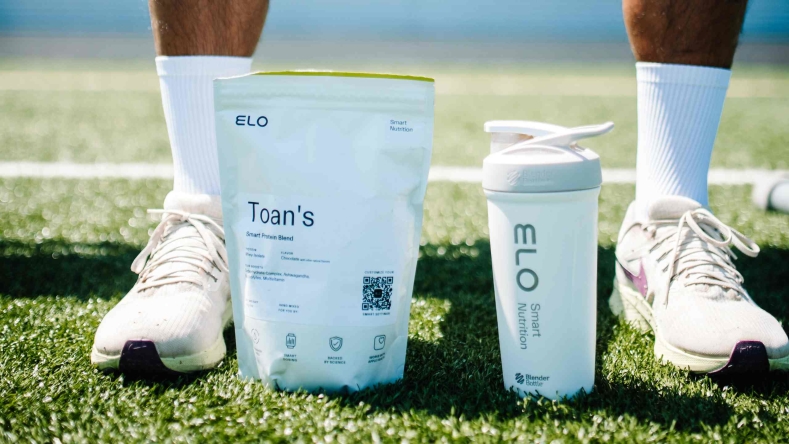
Recover better with Elo Smart Protein
If you’re a cyclist looking to level up your recovery regimen, Elo Smart Protein
Using a combination of your exercise data, your dietary preferences and goals, and the latest scientific research, Elo determines the ideal blend to both maximize post-workout recovery and help you reach your health goals. Elo’s functional boosts make it much more than just protein. From carbohydrates to replenish energy stores, electrolytes to boost hydration, and collagen to support healthy joints, our boosts will help you get the maximum benefits from your post-ride protein. Check out this article to learn more about Smart Protein and how certain boosts can further personalize your formula.
Think of it as a supplement and protein powder in one scoop, uniquely designed for you and your recovery needs. Smart Protein is perfect for exercise enthusiasts of any age.
Try Smart Protein today and get 30% off your first month with code TRY30
.
5 strategies to help you recover after a ride
Now that you know why recovery is important, you may be wondering what you should include in your routine to make the most gains on and off the bike. Research shows us the best way to recover from a tough ride is to use a combination of recovery tactics 23
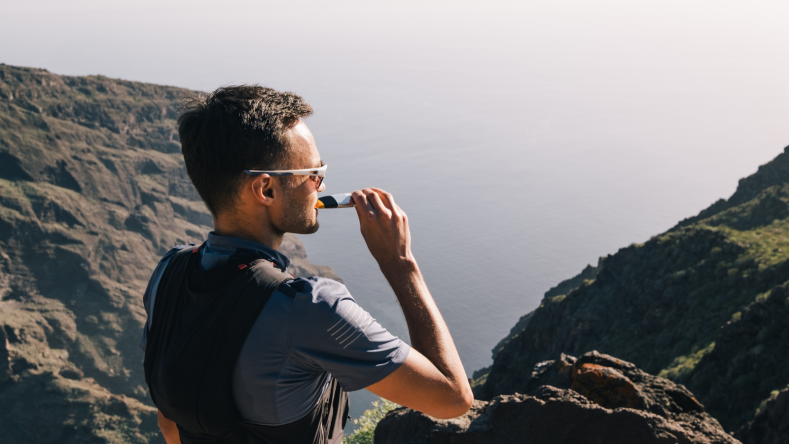
1. Prioritize refueling & rehydration post-ride.
The moment you get off your bike, your body enters into recovery mode. For a short time, your body is primed to replenish depleted electrolytes and energy stores, and repair and build new muscle tissue.
To recover effectively, your body needs three main things shortly after exercise: fluids, carbohydrates, and protein. Fluids are vital for maintaining normal body function, delivering key nutrients to tired muscles, minimizing soreness, and removing metabolic byproducts and toxins from the body [ 5 8 5
While you may not feel hungry or thirsty right away, research shows the optimal time to replenish fuel and fluid is 15-60 minutes after exercising [ 5
Drink 24 ounces (3 cups) of water for every pound of lost body weight [
9
]. If you’re not near a scale, drink enough fluids to make your urine pale yellow or lighter. You may also want to consider an electrolyte-enhanced sports drink if you work out for longer than 45 minutes, exercise in a hot and humid environment, or happen to be a salty sweater [8
].Consume 45-90 g of easy-to-digest carbohydrates after moderate- to high-intensity rides lasting >45 minutes. For intense, high-volume training (3-6 hours/day, 5-6 days/week), experts recommend getting 1.2 g/kg/hr for the 4-6 hours into recovery [
5
,9
].Pair your carbs with 20-40 g of high-quality protein. By pairing your carbs with protein, you’ll replenish glycogen and enhance protein synthesis [
5
]. Good food sources of protein include eggs, lean meat, milk, yogurt, and soybeans tofu. If you’re on the go or don’t have time for a meal, evidence shows recovery supplements (likeElo Smart Protein
) can also boost performance and recovery [10
].
If you want to dive deeper into recovery nutrition, our
Ultimate Guide to Post Workout Nutrition
is loaded with even more science, recommendations, andpost-workout snack and meal ideas
.
2. Massage and foam roll sore muscles.
Many athletes incorporate massage into their post-ride routine, and the rationale behind it is pretty sound. Evidence shows that massage can alleviate delayed onset muscle soreness (DOMS) and produce notable enhancements in flexibility [ 11
For those who cannot indulge in a regular sports massage due to cost or convenience, foam rolling is a more practical and budget-friendly alternative. Studies indicate that incorporating daily foam rolling into your routine (as little as two one-minute sessions per muscle group) can yield positive results in reducing soreness and improving range of motion [ 12
Key areas for cyclists to hit include the quadriceps, hamstrings, calves, IT band, piriformis, and upper and lower back.

3. Get enough rest.
Getting enough rest (which includes sleep and time off between workouts) is another vital component of cyclist recovery.
Sleep is a crucial (yet often overlooked) component of the recovery process for both physical and mental restoration. While you sleep, your body produces specialized proteins and human growth hormones stimulating muscle growth and repair [ 13 14
As such, studies show poor sleep in athletes can contribute to decreased alertness, impaired performance, prolonged recovery, and increased perceived exertion during exercise [ 15 16 17
So how much sleep do you need to cycle your best? Experts recommend 7-9 hours per night for optimal performance and recovery. If you’re an elite athlete, you’ll want to get at least nine hours of sleep every night [ 18
If you have trouble falling or staying asleep, some
safe sleep supplements
may help.
In addition to sleep, scheduling adequate rest days is another crucial part of recovery that allows your muscles time to heal, get stronger, and help prevent injury. A rest day can be a day of complete relaxation or a lightly active day that incorporates gentle movement such as an easy recovery ride, walking, gentle stretching, or yoga.
Typically experts recommend at least 48-72 hours of rest between training sessions that work the same muscle group [ 19 20
4. Try cold water and compression.
Cold water immersion and compression are two popular recovery strategies among athletes that have been shown to help with recovery after strenuous exercise.
Studies show plunging your body into a brisk 46–59°F (8-15°C) bath for 5-20 minutes may help reduce muscle soreness, perception of fatigue, markers of inflammation, and muscle damage after strenuous exercise [ 21 18
If plunging into a pool of cold water sounds unappealing, you may find compression socks more comfortable. A review of studies shows wearing compression socks, both during and just after exercise, can aid recovery by reducing post-exercise muscle fatigue and soreness, particularly if you have short recovery windows between races or training sessions [ 22 23
Of course, combining the two can also be beneficial. One small study showed putting on compression garments after cold water immersion may lessen the increase of muscle damage markers in the blood following intense exercise [ 33
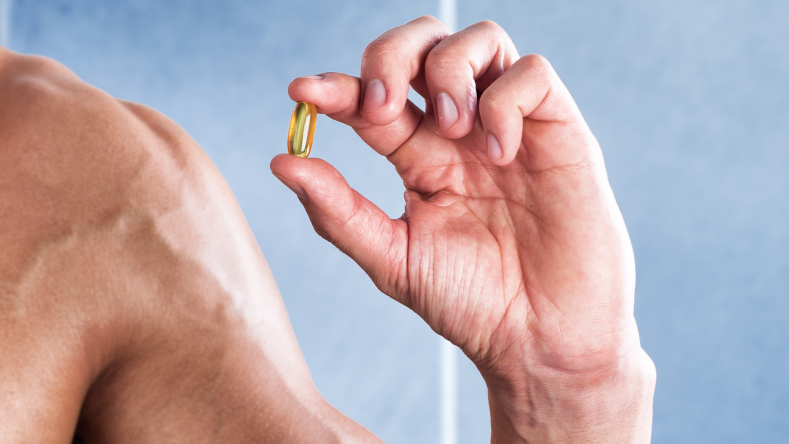
5. Consider certain supplements.
Beyond refueling, massage, rest, cold water, and compression, you may want to consider supplementation to enhance recovery after cycling. Here are some beneficial supplements for cyclists you might want to include in your recovery regimen.
Fish oil
: this supplement contains beneficial omega-3 fatty acids (including DHA and EPA) which provides anti-inflammatory benefits that may reduce soreness, enhance recovery and repair from muscle-damaging exercise, and help with injury prevention [24
]. Studies in healthy adults show that 2 g/day of omega-3s is safe and effective for reducing inflammation while taking 3 g/day of combined EPA and DHA can reduce muscle soreness after exercise [24
,25
].Turmeric
: this supplement has an array of anti-inflammatory benefits that may also be beneficial to recovery. Studies indicate that 150-1,500 mg of turmeric per day may help attenuate acute inflammation, improve post-exercise recovery, and reduce muscle soreness [26
,27
,28
].Creatine
: this is a dietary amino acid found in muscles, and may enhance recovery by increasing glycogen resynthesis and muscle protein synthesis while reducing muscle damage, inflammation, and post-ride muscle soreness [24
,29
]. To supplement, experts recommend beginning with a loading dose of 20 g/day of creatine monohydrate for 5 days, and reducing your daily intake to 3-5 g/day thereafter [24
].Tart cherry juice: this supplement is rich in antioxidants and anti-inflammatory properties that may help improve performance, reduce pain, soreness, and inflammation, and accelerate strength recovery after both strength and endurance exercises [
30
,31
]. Experts recommend taking 8-12 ounces (1 ounce if in concentrate form) twice a day, 4-5 days leading up to an event or strenuous exercise, and 2-3 days after to promote recovery [31
].Glutamine: this is another naturally occurring amino acid naturally found in muscles. Research shows supplementation with glutamine can reduce strength loss, accelerate strength recovery, and reduce muscle soreness more quickly than a placebo [
32
]. Science suggests dosages ranging from 0.21 - 0.42 g/kg/day are safe and effective for enhancing recovery in athletes [32
].
If you want to learn more about supplements for cycling performance, check out our guide on the best supplements for cyclists
Elo Health
also offerssmart supplements
tailored to your unique recovery needs with workout data and 1:1 dietitian support.Learn more
about how Elo Health can help you optimize your post-workout nutrition routine
Other articles about cycling and recovery
Here are some other recovery and cycling-related articles we think you’ll enjoy.
Summary
What you do (or don’t do) after a ride can profoundly affect your cycling recovery and future performance. Post-ride refueling and rehydration, massage, rest, cold water immersion, compression, and supplementation are some of the most effective recovery strategies for cyclists. Using a variety of these tactics will help you reap the most benefits. Learn more about how Elo Health personalized protein smart supplements
Disclaimer: The text, images, videos, and other media on this page are provided for informational purposes only and are not intended to treat, diagnose or replace personalized medical care.
Key takeaways
After a workout, aim to get 20-40 g of protein, 45-90 g of carbs, and 3 cups of fluid per pound of body weight lost within 60 minutes of finishing your ride.
Other strategies shown to have recovery benefits include massage, rest, cold water immersion, compression, and supplementation.
Elo Health
can help you optimize your post-ride nutrition routine withpersonalized protein
,smart supplements
, and 1:1 dietitian support.
References
Murray, B., & Rosenbloom, C. (2018). Fundamentals of glycogen metabolism for coaches and athletes. Nutrition reviews, 76(4), 243–259.
https://doi.org/10.1093/nutrit/nuy001
Popkin, B. M., D'Anci, K. E., & Rosenberg, I. H. (2010). Water, hydration, and health. Nutrition reviews, 68(8), 439–458.
https://doi.org/10.1111/j.1753-4887.2010.00304.x
Cerqueira, R., Marinho, D. A., Neiva, H. P., & Lourenço, O. (2020). Inflammatory Effects of High and Moderate Intensity Exercise—A Systematic Review. Frontiers in Physiology, 10.
https://doi.org/10.3389/fphys.2019.01550
Gleeson, M., Nieman, D. C., & Pedersen, B. K. (2004). Exercise, nutrition and immune function. Journal of Sports Sciences, 22(1), 115–125.
https://doi.org/10.1080/0264041031000140590
Kerksick, C., Harvey, T., Stout, J., Campbell, B., Wilborn, C., Kreider, R., Kalman, D., Ziegenfuss, T., Lopez, H., Landis, J., Ivy, J. L., & Antonio, J. (2008). International Society of Sports Nutrition position stand: Nutrient timing. Journal of the International Society of Sports Nutrition, 5(1).
https://doi.org/10.1186/1550-2783-5-17
Nippert, A. H., & Smith, A. M. (2008). Psychologic stress related to injury and impact on sport performance. Physical medicine and rehabilitation clinics of North America, 19(2), 399–x.
https://doi.org/10.1016/j.pmr.2007.12.003
Schiphof-Godart, L., Roelands, B., & Hettinga, F. J. (2018). Drive in Sports: How Mental Fatigue Affects Endurance Performance. Frontiers in psychology, 9, 1383.
https://doi.org/10.3389/fpsyg.2018.01383
Cleary, M. A., Sweeney, L. A., Kendrick, Z. V., & Sitler, M. R. (2005). Dehydration and symptoms of delayed-onset muscle soreness in hyperthermic males. Journal of athletic training, 40(4), 288–297.
https://www.ncbi.nlm.nih.gov/pmc/articles/PMC1323290/
Kerksick, C. M., Wilborn, C. D., Roberts, M. D., Smith-Ryan, A., Kleiner, S. M., Jäger, R., Collins, R., Cooke, M., Davis, J. N., Galvan, E., Greenwood, M., Lowery, L. M., Wildman, R., Antonio, J., & Kreider, R. B. (2018). ISSN exercise & sports nutrition review update: research & recommendations. Journal of the International Society of Sports Nutrition, 15(1).
https://doi.org/10.1186/s12970-018-0242-y
Phillips, S. M., & Van Loon, L. J. (2011). Dietary protein for athletes: From requirements to optimum adaptation. Journal of Sports Sciences, 29(sup1), S29–S38.
https://doi.org/10.1080/02640414.2011.619204
Davis, H. L., Alabed, S., & Chico, T. J. A. (2020). Effect of sports massage on performance and recovery: a systematic review and meta-analysis. BMJ open sport & exercise medicine, 6(1), e000614.
https://doi.org/10.1136/bmjsem-2019-000614
Macdonald, G. Z., Button, D. C., Drinkwater, E. J., & Behm, D. G. (2014). Foam rolling as a recovery tool after an intense bout of physical activity. Medicine and science in sports and exercise, 46(1), 131–142.
https://doi.org/10.1249/MSS.0b013e3182a123db
Dáttilo, M., Antunes, H. K. M., Galbes, N. M. N., Mônico-Neto, M., DE Sá Souza, H., Dos Santos Quaresma, M. V. L., Lee, K. S., Ugrinowitsch, C., Tufik, S., & DE Mello, M. T. (2020). Effects of Sleep Deprivation on Acute Skeletal Muscle Recovery after Exercise. Medicine and science in sports and exercise, 52(2), 507–514.
https://doi.org/10.1249/MSS.0000000000002137
Diekelmann, S. (2014). Sleep for cognitive enhancement. Frontiers in Systems Neuroscience, 8.
https://doi.org/10.3389/fnsys.2014.00046
Roberts, S., Teo, W. P., Aisbett, B., & Warmington, S. A. (2019). Extended Sleep Maintains Endurance Performance Better than Normal or Restricted Sleep. Medicine and science in sports and exercise, 51(12), 2516–2523.
https://doi.org/10.1249/MSS.0000000000002071
Temesi, J., Arnal, P. J., Davranche, K., Bonnefoy, R., Levy, P., Verges, S., & Millet, G. Y. (2013). Does central fatigue explain reduced cycling after complete sleep deprivation?. Medicine and science in sports and exercise, 45(12), 2243–2253.
https://doi.org/10.1249/MSS.0b013e31829ce379
Sargent, C., Lastella, M., Halson, S. L., & Roach, G. D. (2014). The impact of training schedules on the sleep and fatigue of elite athletes. Chronobiology international, 31(10), 1160–1168.
https://doi.org/10.3109/07420528.2014.957306
Bird, S. P. (2013). Sleep, Recovery, and Athletic Performance. Strength & Conditioning Journal, 35(5), 43–47.
https://doi.org/10.1519/ssc.0b013e3182a62e2f
Monteiro, E. R., Vingren, J. L., Corrêa Neto, V. G., Neves, E. B., Steele, J., & Novaes, J. S. (2019). Effects of Different Between Test Rest Intervals in Reproducibility of the 10-Repetition Maximum Load Test: A Pilot Study with Recreationally Resistance Trained Men. International journal of exercise science, 12(4), 932–940
Fletcher, J. (2021, January 28). When and how to spend a rest day.
https://www.medicalnewstoday.com/articles/rest-day
Versey, N. G., Halson, S. L., & Dawson, B. T. (2013). Water immersion recovery for athletes: effect on exercise performance and practical recommendations. Sports medicine (Auckland, N.Z.), 43(11), 1101–1130.
https://doi.org/10.1007/s40279-013-0063-8
Mota, G. R., Simim, M. A. M., Dos Santos, I. A., Sasaki, J. E., & Marocolo, M. (2020). Effects of Wearing Compression Stockings on Exercise Performance and Associated Indicators: A Systematic Review. Open access journal of sports medicine, 11, 29–42.
https://doi.org/10.2147/OAJSM.S198809
Overmayer, R. G., Tavares, F. C., & Driller, M. W. (2018). Acute Post-Exercise Recovery Strategies in Cycling: A Review. Journal of Science and Cycling, 7(3), 11–44.
https://doi.org/10.28985/181231.jsc.04
Rawson, E. S., Miles, M. P., & Larson-Meyer, D. E. (2018). Dietary Supplements for Health, Adaptation, and Recovery in Athletes, International Journal of Sport Nutrition and Exercise Metabolism, 28(2), 188-199. Retrieved Feb 15, 2021, from
https://journals.humankinetics.com/view/journals/ijsnem/28/2/article-p188.xml
Office of Dietary Supplements - Omega-3 Fatty Acids. (2022, July 28).
https://ods.od.nih.gov/factsheets/Omega3FattyAcids-HealthProfessional/
Yoon, W. Y., Lee, K., & Kim, J. (2020). Curcumin supplementation and delayed onset muscle soreness (DOMS): effects, mechanisms, and practical considerations. Physical activity and nutrition, 24(3), 39–43.
https://doi.org/10.20463/pan.2020.0020
Tanabe, Y., Chino, K., Ohnishi, T., Ozawa, H., Sagayama, H., Maeda, S., & Takahashi, H. (2019). Effects of oral curcumin ingested before or after eccentric exercise on markers of muscle damage and inflammation. Scandinavian journal of medicine & science in sports, 29(4), 524–534.
https://doi.org/10.1111/sms.13373
Fernández-Lázaro, D., Mielgo-Ayuso, J., Seco Calvo, J., Córdova Martínez, A., Caballero García, A., & Fernandez-Lazaro, C. I. (2020). Modulation of Exercise-Induced Muscle Damage, Inflammation, and Oxidative Markers by Curcumin Supplementation in a Physically Active Population: A Systematic Review. Nutrients, 12(2), 501.
https://doi.org/10.3390/nu12020501
Nelson, A. G., Arnall, D. A., Kokkonen, J., Day, R., & Evans, J. (2001). Muscle glycogen supercompensation is enhanced by prior creatine supplementation. Medicine and science in sports and exercise, 33(7), 1096–1100.
https://doi.org/10.1097/00005768-200107000-00005
Gao, R., & Chilibeck, P. D. (2020). Effect of Tart Cherry Concentrate on Endurance Exercise Performance: A Meta-analysis. Journal of the American College of Nutrition, 39(7), 657–664.
https://doi.org/10.1080/07315724.2020.1713246
Vitale, K. C., Hueglin, S., & Broad, E. (2017). Tart Cherry Juice in Athletes: A Literature Review and Commentary. Current sports medicine reports, 16(4), 230–239.
https://doi.org/10.1249/JSR.0000000000000385
Office of Dietary Supplements - Dietary Supplements for Exercise and Athletic Performance. (n.d.).
https://ods.od.nih.gov/factsheets/ExerciseAndAthleticPerformance-HealthProfessional/
Maruyama, T., Mizuno, S., & Goto, K. (2019). Effects of cold water immersion and compression garment use after eccentric exercise on recovery. Journal of exercise nutrition & biochemistry, 23(1), 48–54.
https://doi.org/10.20463/jenb.2019.0007

